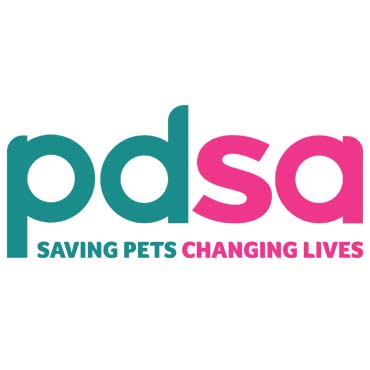We know it’s a real challenge to keep children entertained whilst also keeping pets happy, relaxed and exercised. Our pets notice anything different; they are sensitive and very aware of any changes in their household.
It’s likely that bored children will want to play with pets much more and some pets will enjoy the extra fun and fuss! However, if your pets are used to peace and quiet in the day when you’re out at school and work, this sudden change could be worrying for them. It’s very important for children to understand that pets can become stressed when over fussed and that even the most laid back pet can be pushed too far.
We’ve put together our top tips to help keep the peace at home and make sure everyone stays safe during lockdown, whether they have two legs or four!
Help pets feel relaxed and safe
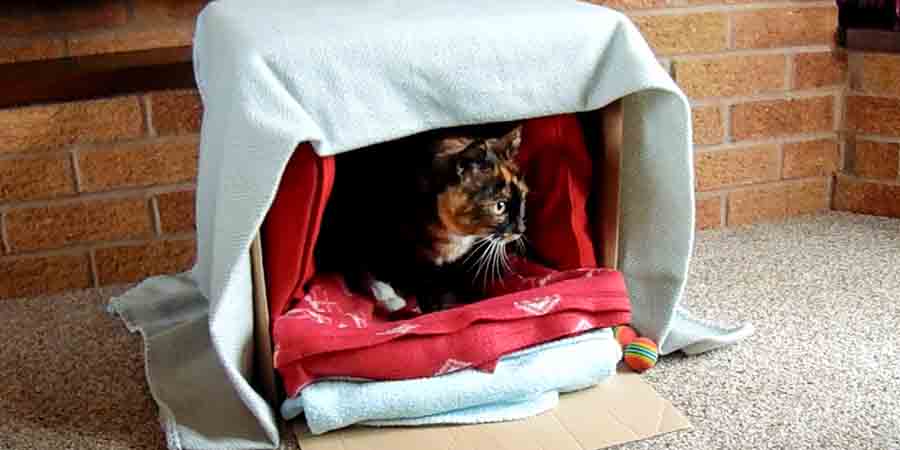
Creating a safe space or den for your dog or cat to retreat to can really help with this. For dogs, fill the space with comfortable bedding and a few of their favourite toys and make sure that everyone understands that if they go in there, they are to be left alone. This is their ‘time out’ space, and it’s important that they’re left alone when they choose to get some space. If you need to get them out, call them to encourage them out, rather than go into their space to bring them out.
For cats, clear the top of a wardrobe or cupboard and pop a blanket or bed up there for them so they can jump up for a sleep, away from all the noise!
Synthetic pheromones might help to relax our pets. These are readily available online or in pet stores and can be used as plug in diffusers, sprays or collars. These products give off comforting, odourless pheromones which people can’t detect, but may have a calming effect on animals. You can buy pheromone diffusers from the PDSA Pet Store.
Try to keep loud and sudden noises to a minimum, especially if your dog or cat is sensitive to noise, and encourage children to try and be quiet around any pets in the home. When this isn’t possible, try and keep noisier activities in a separate room to your pet’s quiet space.
Supervise or separate!
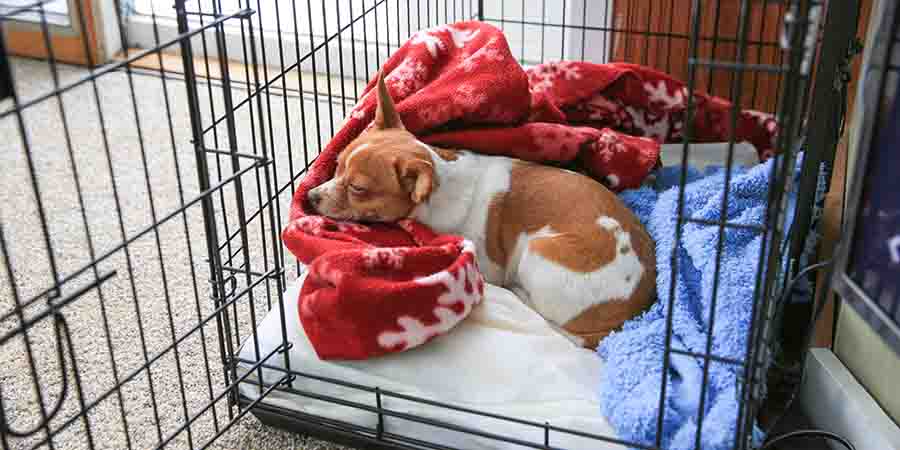
It is important to always supervise children around dogs. This is particularly important for younger children who may not yet understand how important it is to leave dogs alone, not get into their bed, take their toys, pull their tail or grab their food!
Explain to children that they need to give their dog space, to only pet them when the dog comes to them for a fuss, and not to give hugs or kisses (as many dogs only tolerate this from children, rather than enjoying it). At times when this isn’t possible, make sure dogs are safely in a separate part of the house or garden – don’t forget they always need constant access to water and a comfortable place to rest.
Understand each other
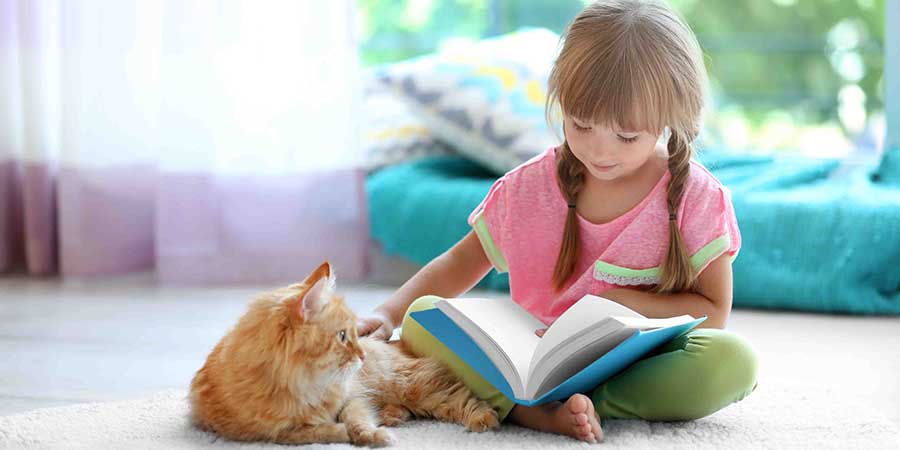
We can tell a lot about how our pet is feeling by their body language. It’s important to keep an eye on them and learn what they’re trying to tell you so you can recognise if they’re feeling uncomfortable, before a situation gets worse.
Dogs and cats both communicate in very different ways, though, so we’ve pulled together our top tips on what to look out for.
Dog body language
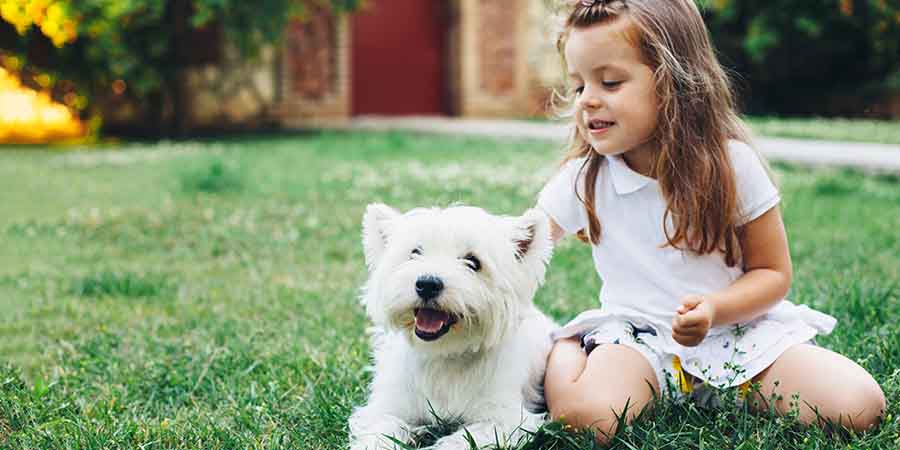
Dogs use their whole bodies to communicate their emotions from their ears, eyes, and mouth, down to their tail. Some of the key things to look out for are:
- A happy, relaxed dog. If a dog is showing loose, wiggly body language with a relaxed mouth (tongue might be loosely hanging out), ears forward and floppy, tail up or waggy this probably means that they are feeling happy, relaxed, and content.
- An excited or worried dog. If a dog’s body is tense, with a closed mouth, ears forward and up, and an elevated tail, this might mean that they are alert. Depending on what is happening at that time this could mean they are feeling a number of ways including excited, frustrated, or worried.
- An uncomfortable or scared dog. A dog that is feeling unsure, uncomfortable or scared might have low body posture, their tail might be down or tucked underneath them. They might raise a paw, and show the white bits at the sides of their eyes, lick their lips and nose, and sometimes yawn, scratch or shake their coats.
You can read more about dog body language on our advice page, or visit our ladder of communication page for information on how dogs tell us they’re unhappy.
Cat body language
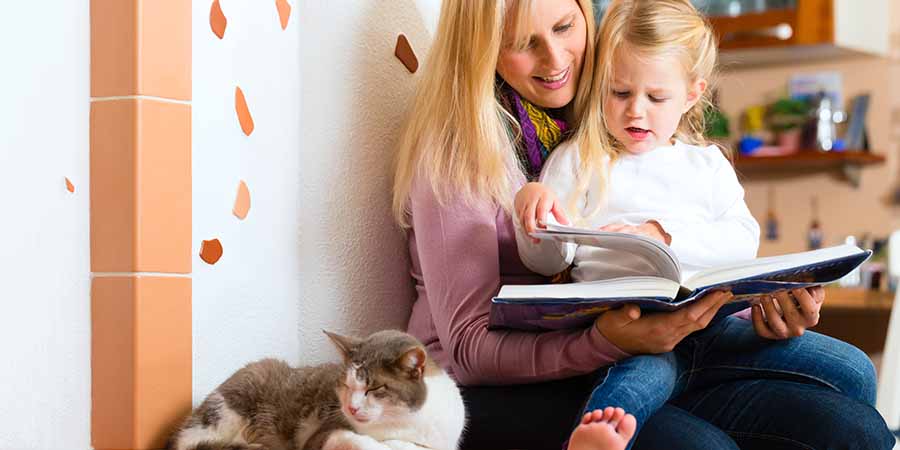
We can tell how a cat is feeling by their body language, but their signs of stress are much more subtle than dogs. It is important to look at your cat’s facial expressions and their body posture. Some things to look out for are:
- A calm, relaxed cat. If your cat’s ears relaxed and facing forward, this usually means they are calm, especially if they’re lying down on their back. Some people may think their cat wants their belly rubbed, but this isn’t usually the case so we wouldn’t recommend it!
- An unhappy cat. If a cat is unhappy about something, their ears may be out to the side or flat, their pupils might be dilated and their body might be tense. Their tail may also move from side to side. Give your cat plenty of space if they are doing this and stop anything you might be doing with them.
Rabbits and small pets
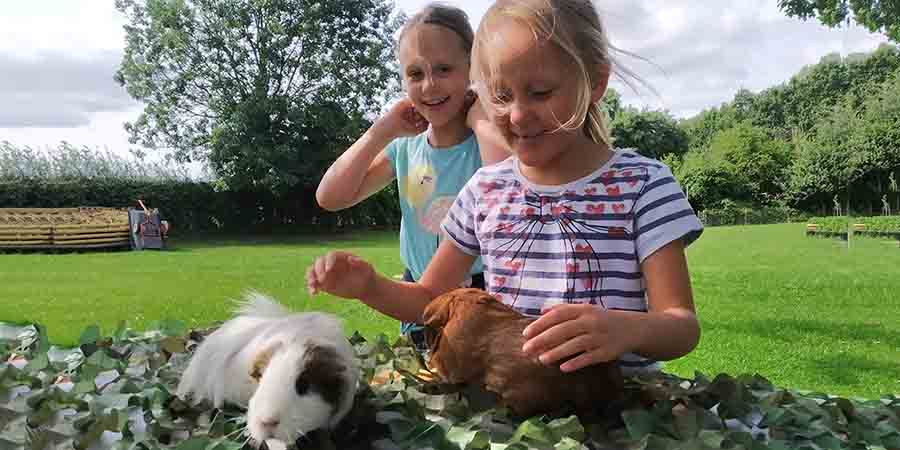
While kids are at home, they might want to spend more time with their small pets. Hamsters and most other rodents are nocturnal (they sleep during the day), so it's important to make sure they're left to sleep when they want to during the day. Rabbits are crepuscular which means they are most active at dawn and dusk. Just like our other pets, you can tell a lot about how your rabbits are feeling by their body language. Read our advice on rabbit body language.
Some small pets might enjoy handling and be used to it, but some others may not enjoy it and they may be scared, which can result in children being bitten or scratched. Remember to make sure children are handling small pets safely and with supervision. You can read more about the correct ways to hold small pets in our free guides:
- How to hold rabbits
- How to hold guinea pigs
- How to hold a hamster
- How to hold a mouse
- How to hold a rat
